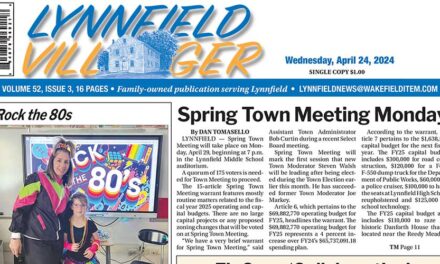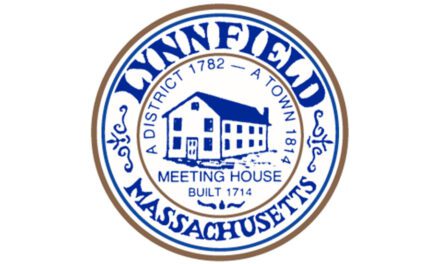Published November 18, 2020
By DAN TOMASELLO
LYNNFIELD — School officials criticized the state for urging districts to implement more in-person education while refusing to loosen current social distancing regulations during a Nov. 10 meeting.
Gov. Charlie Baker and Department of Elementary and Secondary Education (DESE) officials have been pushing school districts across the state to fully resume in-person learning while simultaneously warning people to stay vigilant as COVID-19 cases across the commonwealth spike.
While Baker is strongly urging school districts across the state to begin implementing more in-person learning, Superintendent Kristen Vogel said that DESE has not changed any of the mandated guidelines that forced the school system to implement a hybrid model instead of bringing every student back in-person. She said school officials don’t have the power to overrule the state’s guidelines.
“Just like our governor, what we have wanted all along is to bring kids back in-person,” said Vogel. “There are tremendous benefits for children academically and social-emotionally, and we know there are economic benefits for our families. But until these guidelines are updated and changed, it is logistically not feasible to bring all of the children back.”
Vogel said DESE has not changed its transportation guidelines. She said the school system can put no more than 23 students on a bus as opposed to the 77 children who can fit on one in normal situations. She also noted that DESE has not updated its facilities guidelines, which require students to be 6-feet apart while learning in a classroom or eating lunch.
“The guidelines explicitly say that students have to be 6-feet apart if they have their mask off while they are eating,” said Vogel. “We cannot fit all of our students full in-person in a lunch room or in a classroom if they have their masks off while eating lunch.”
If the school system decided to use a 3-foot distance in classrooms that DESE suggested could be used as an alternative to the recommended 6-foot guidelines, Vogel said “it would not be feasible in every classroom.”
“Even if it were, we still wouldn’t be able to meet the guidance that says we have to provide a 6-foot space for our teachers at the front of the classroom,” said Vogel. “That guidance has not changed. If you put the desks at 3-feet, we would still only get about 70 percent capacity in some of our classrooms. We would never get to 100 percent capacity even if we thought it was safe to go to 3-feet. DESE is the only organization that has said anything about 3-feet for people to be distant with masks on. There is no other organization that has said 3-feet is an acceptable distance during this pandemic.”
COVID-19 Liaison Toni Rebelo said the state has not changed any guidelines for the close contact definition, which pertains to people who were in close proximity to someone diagnosed with the novel coronavirus.
“If we were able to bring our children in closer than 6-feet, our close contact numbers will significantly rise anytime there is a student or staff member who is infectious in the building,” said Rebelo.
School Committee member Phil McQueen said the state is sending people mixed messages by reducing the number of people who can gather indoors and outdoors while simultaneously recommending that all students go back to school fully in-person.
“They are not being really helpful,” said McQueen. “Again.”
Principal Bob Cleary noted that an individual at Lynnfield High School tested positive for COVID-19. He said the number of close contacts at LHS would have “more than doubled” if 3-feet of distancing was utilized instead of 6-feet.
“The governor and the state are shutting things down and minimizing things,” said Cleary. “And they are telling us we should expand the number of kids who go in. We use common sense in our educational system and what the state is saying is so far from common sense that it is not even funny. We are killing ourselves trying to get as many kids in when the warning signs are saying don’t do this, but the commissioner and the governor are saying it’s a great idea to bring more kids into school. That is really frustrating for us and it is sending a wildly mixed message to families, students and staff. None of us are sitting back and sipping on piña coladas saying what a great plan, let’s continue with this. We would all like to see more kids in the building.”
Summer Street School Principal Dr. Karen Dwyer expressed concerns that if more students are brought back in-person, the schools would be forced to shut down again if the number of cases and quarantines rise.
“We are starting to get into a groove,” said Dwyer. “If we get shut down, all of that momentum will be lost.”
Huckleberry Hill School Principal Melissa Wyland agreed.
“If we went down to less space, in almost every case the teachers will need to quarantine because they will not be 6-feet or more away from each child,” said Wyland. “I think we would lose a lot of teachers if we implemented this right now.”
Teaching and Learning Director Kevin Cyr said it has been difficult finding substitute teachers this year.
“There have been days where we had to do some serious juggling,” said Cyr.
School Committee Chairman Jamie Hayman agreed with many of the concerns raised, but he said the district has to begin planning for students’ eventual return to in-person learning.
“We have to take a crawl/walk approach with what we are doing,” said Hayman. “I don’t want us to lose sight of what the goal is, which is getting kids back into the schools.”
School Committee member Tim Doyle agreed.
“I think the reality will be as move throughout the winter into the spring that we will be able to do something greater than what we are doing right now,” said Doyle. “We have to do some long-range planning and see what we can do to get more kids back into school. But the overriding factor still remains is that as long as the state guidelines and federal feedback is 6-feet is safe distance, the reality is Lynnfield Public Schools is going to be unable to do anything that is greater than we have right now.”
School officials once again urged people to follow the state’s social distancing guidelines. Hayman noted that a teacher sent him an email stating they have heard students discussing various types of weekend get-togethers as well as holiday plans, which he said is making educators nervous. He noted that more Lynnfield students have been diagnosed with COVID-19 than North Reading, Reading and Marblehead students have combined.
“There is a mixed message with how we behave as a community while also wanting to get kids back full-time,” said Hayman. “They have to work together.”
Doyle concurred with Hayman’s point of view.
“The politically incorrect way of saying this is don’t beat the crap out of the School Committee when your kids are not in school and then on weekends go out to a house party,” said Doyle. “That is the frustration that this committee experiences week-in and week-out since this started. So don’t tell us you want kids in school and then go play. It’s one or the other unfortunately.”
McQueen said parents have to take COVID-19 seriously “if they want their kids back in school.”
Reaction
Drury Lane resident Laurie Toscano said the hybrid model is much better than last spring’s remote learning plan. However, she would like the remote component of the current plan to be improved.
“I have fairly good students and I sometimes feel like they are slipping through the cracks,” said Toscano.
Lincoln Avenue resident Bob Dorman said the hybrid plan is not working for students academically or socially. He also took issue with school officials criticizing Gov. Baker and the DESE.
“The updated recommendations provided by the governor and the commissioner of education were supported by science and health care professionals,” said Dorman. “To hear some of the people say we need to use our common sense rather than listen to the recommendations is a bit concerning. I think we need to listen to the experts as we think about a path forward for the district.”
Candlewood Road resident Amie Geary said she is concerned about the mental health impact that keeping students home is having on children. She also suggested that school officials look into having different cohorts come into school on Wednesdays.
Before the discussion about the district’s hybrid plan took place, Hayman asked LHS Student Council President Ava O’Brien to weigh in on it.
“I think we are all happy to be back in school even though we all can’t go together,” said O’Brien. “We are happy we are not remote and we can go to school two days a week.”
O’Brien also said seniors were happy to play their last fall sports season.
“Even though it wasn’t the same as past years, everyone worked hard to make this season special for us,” said O’Brien.




